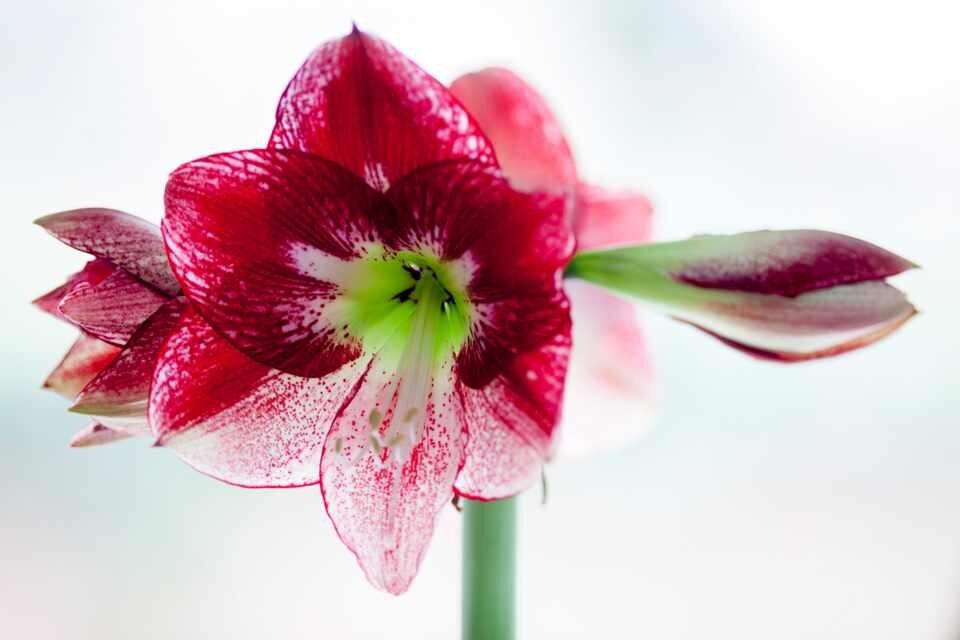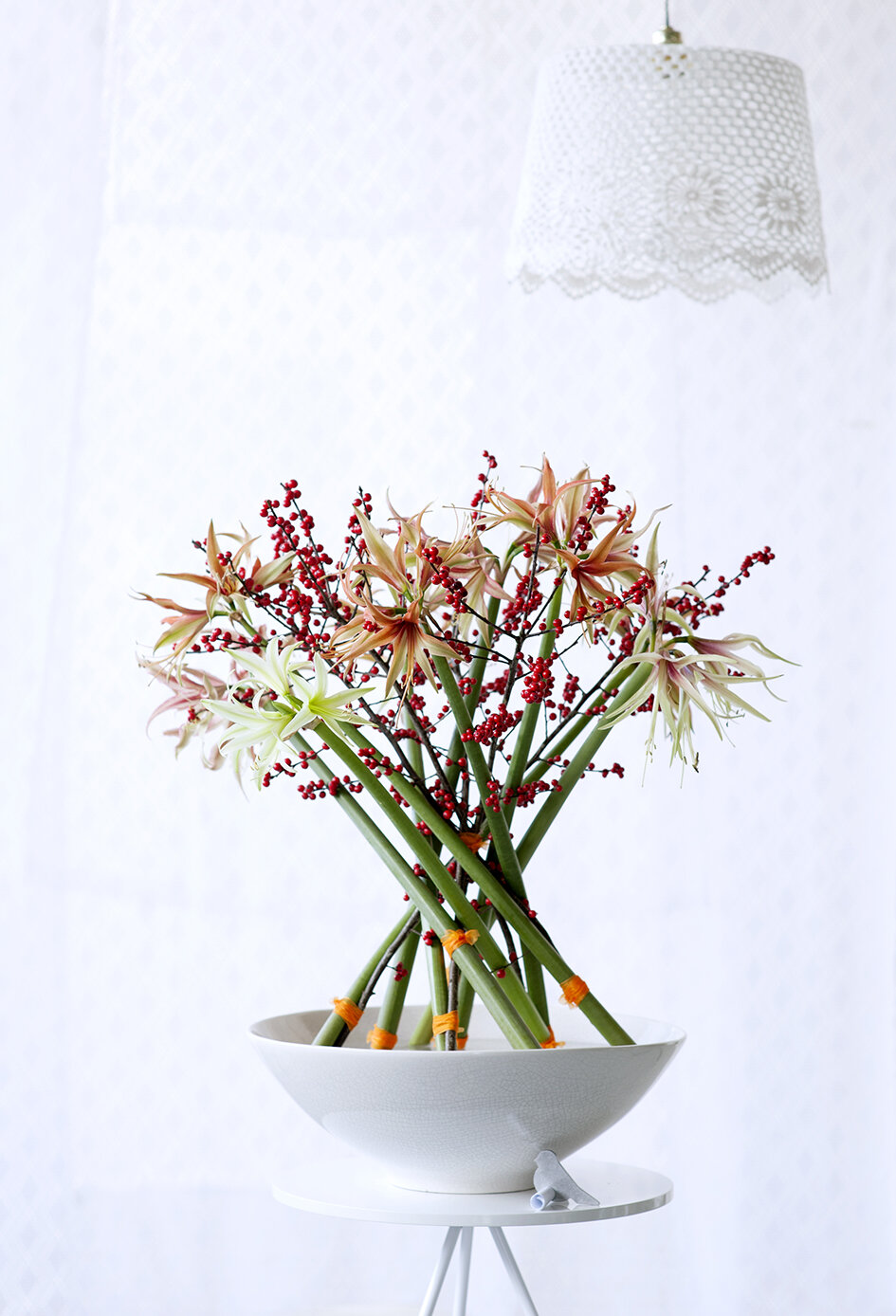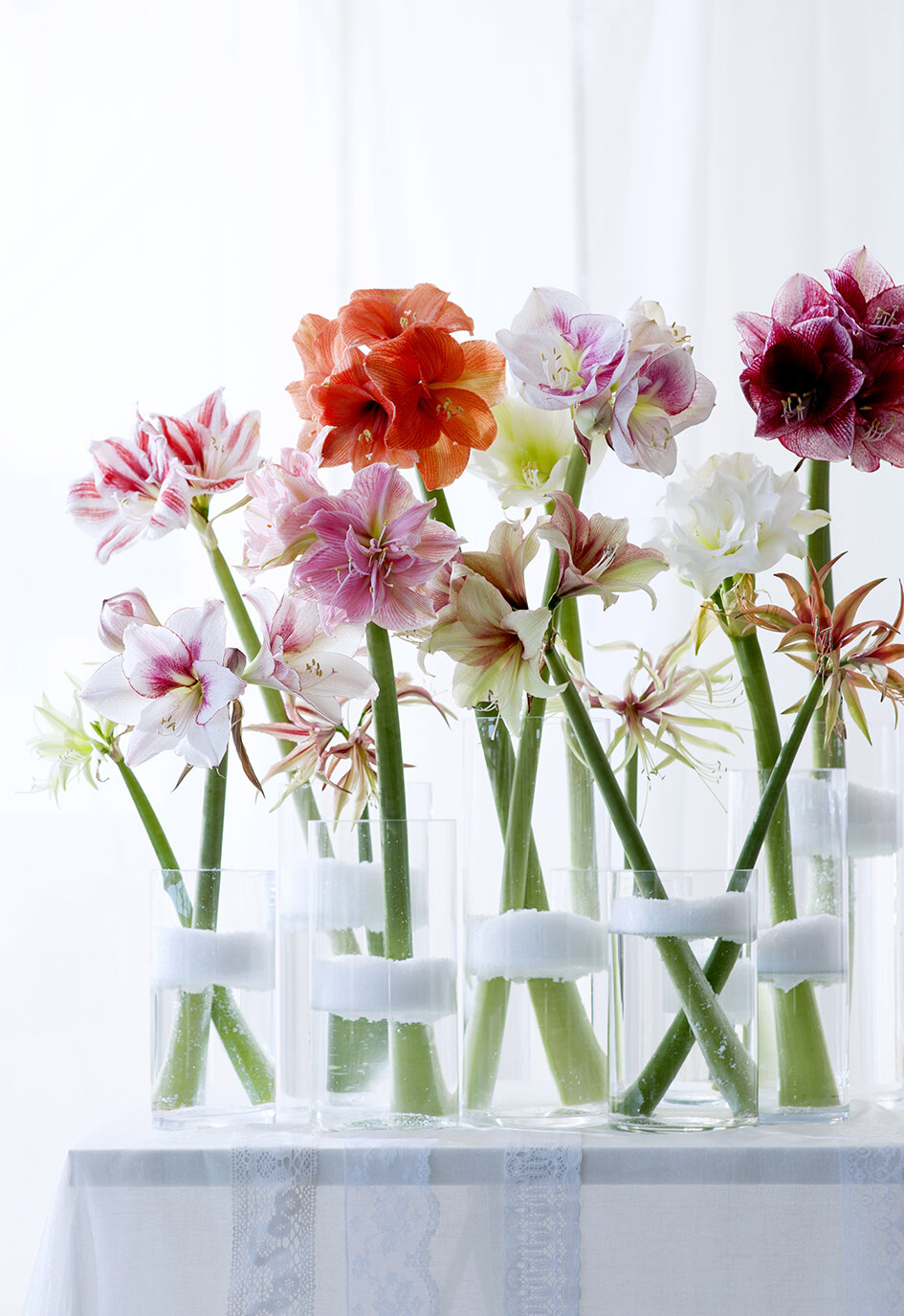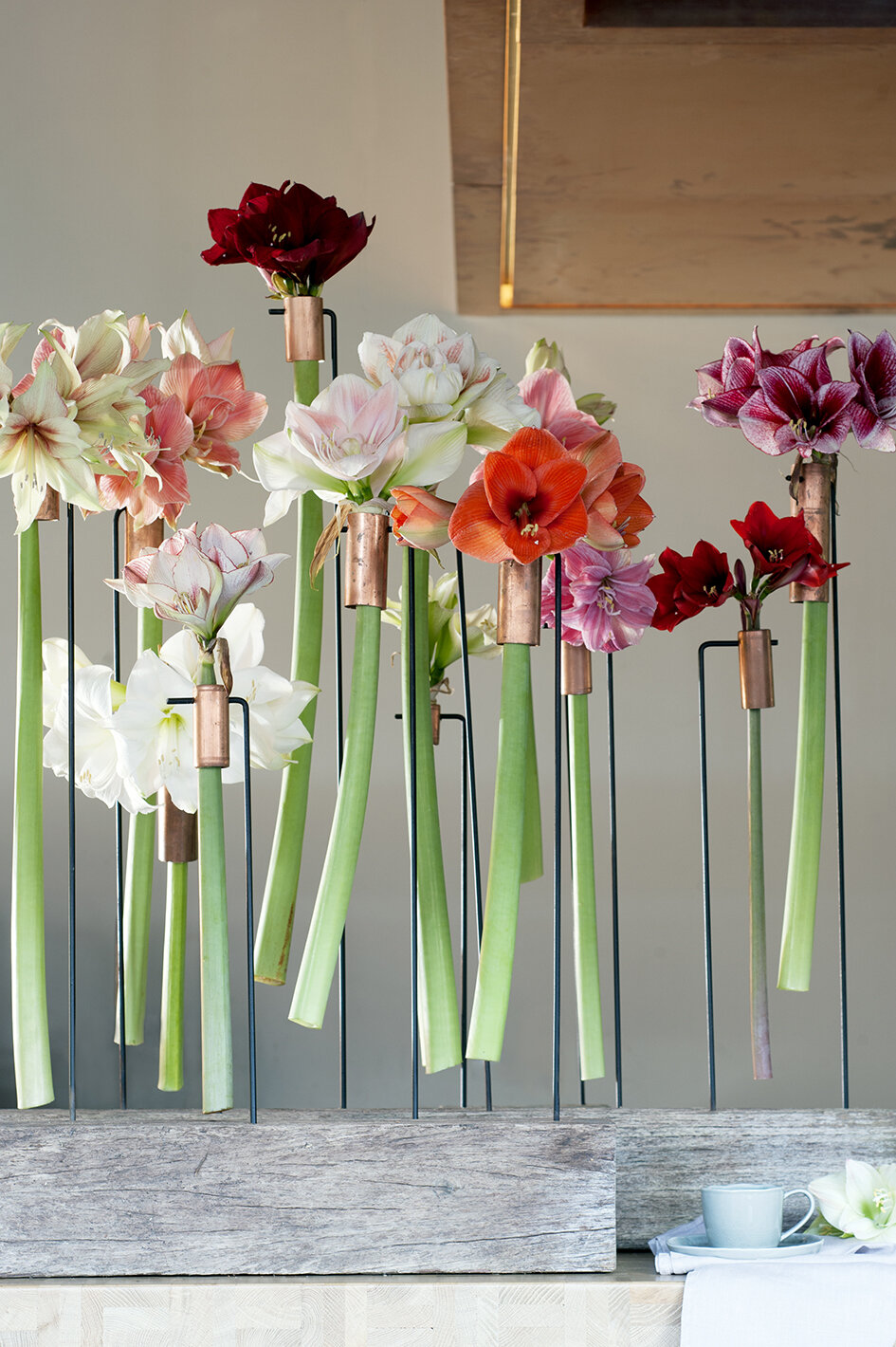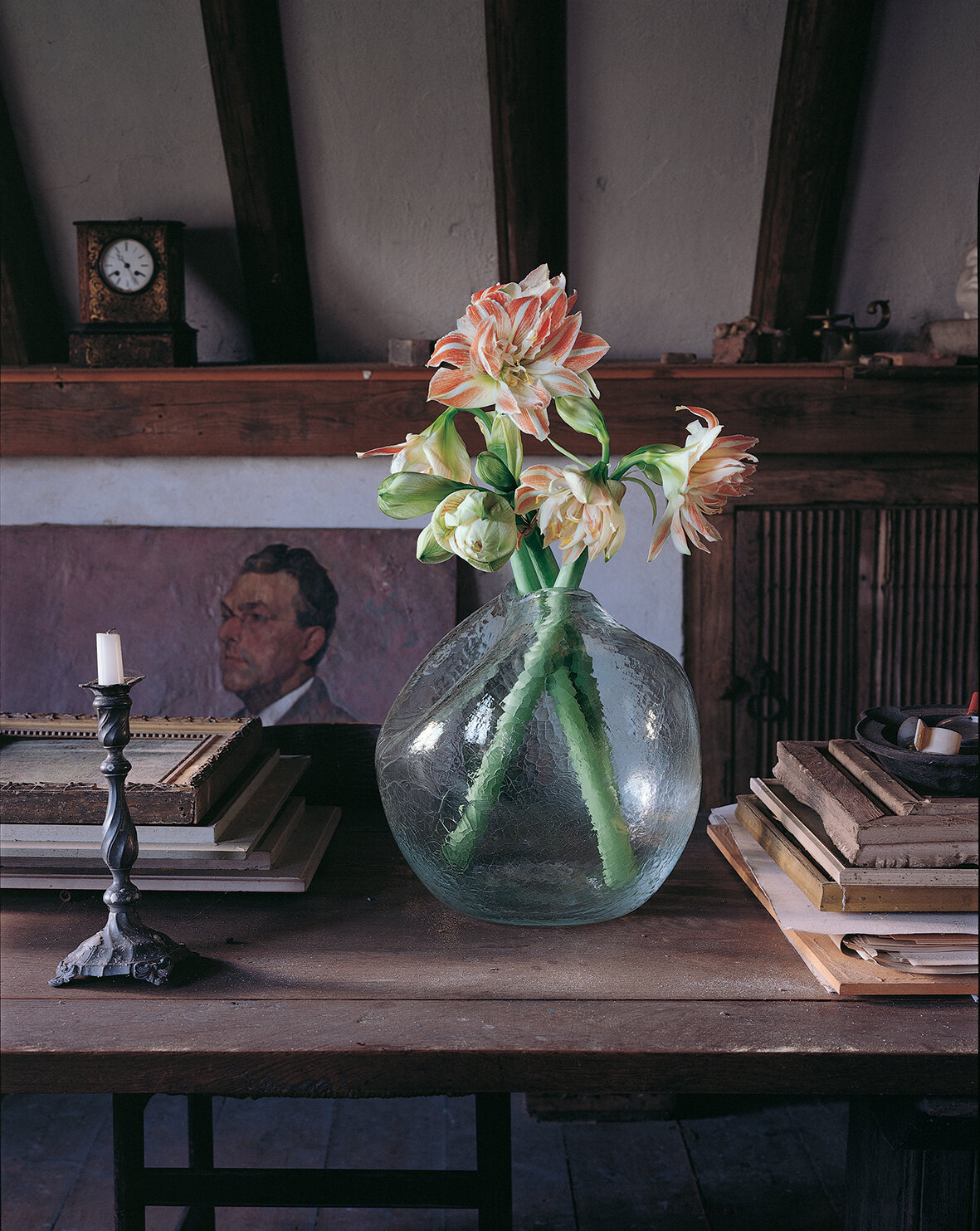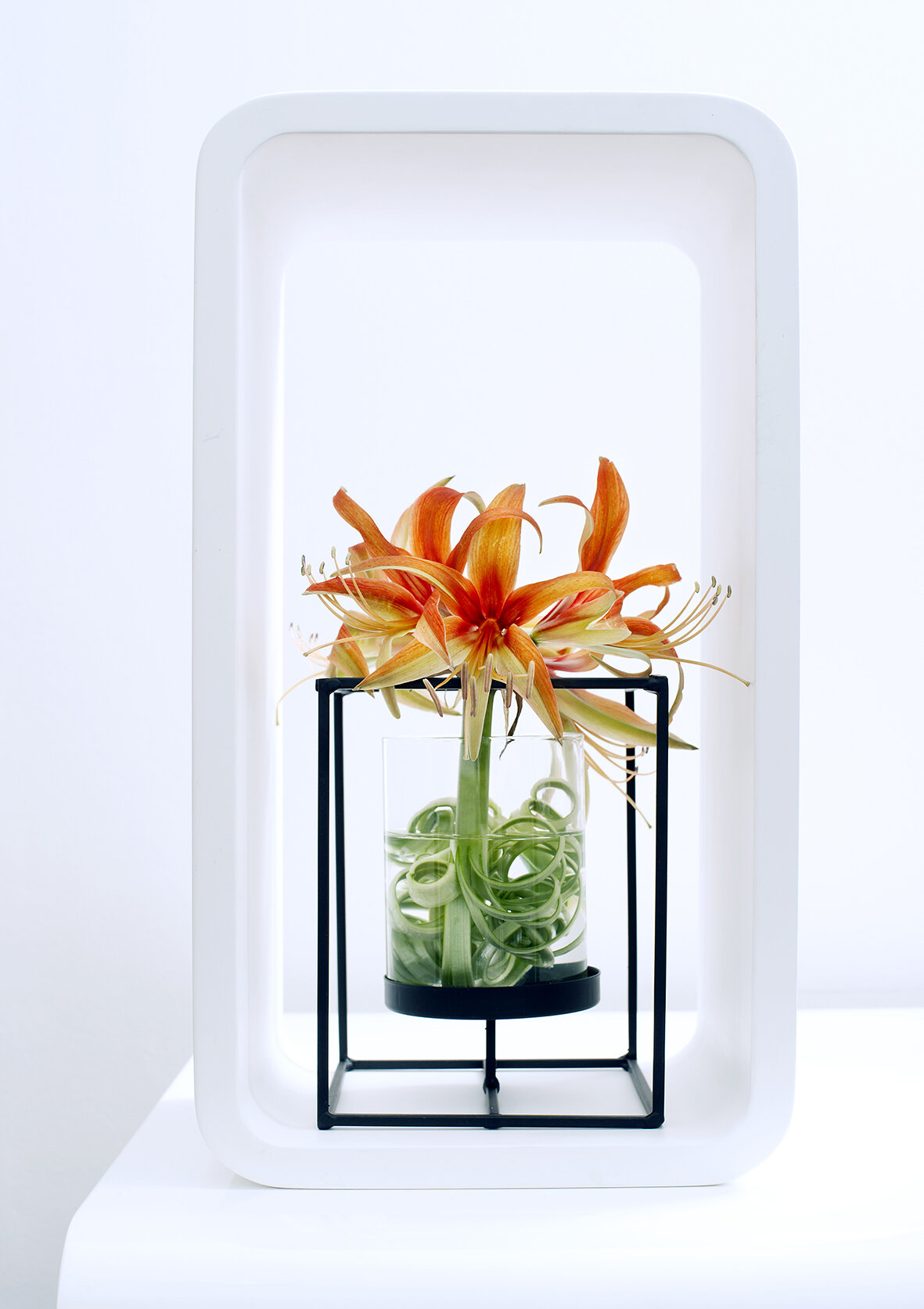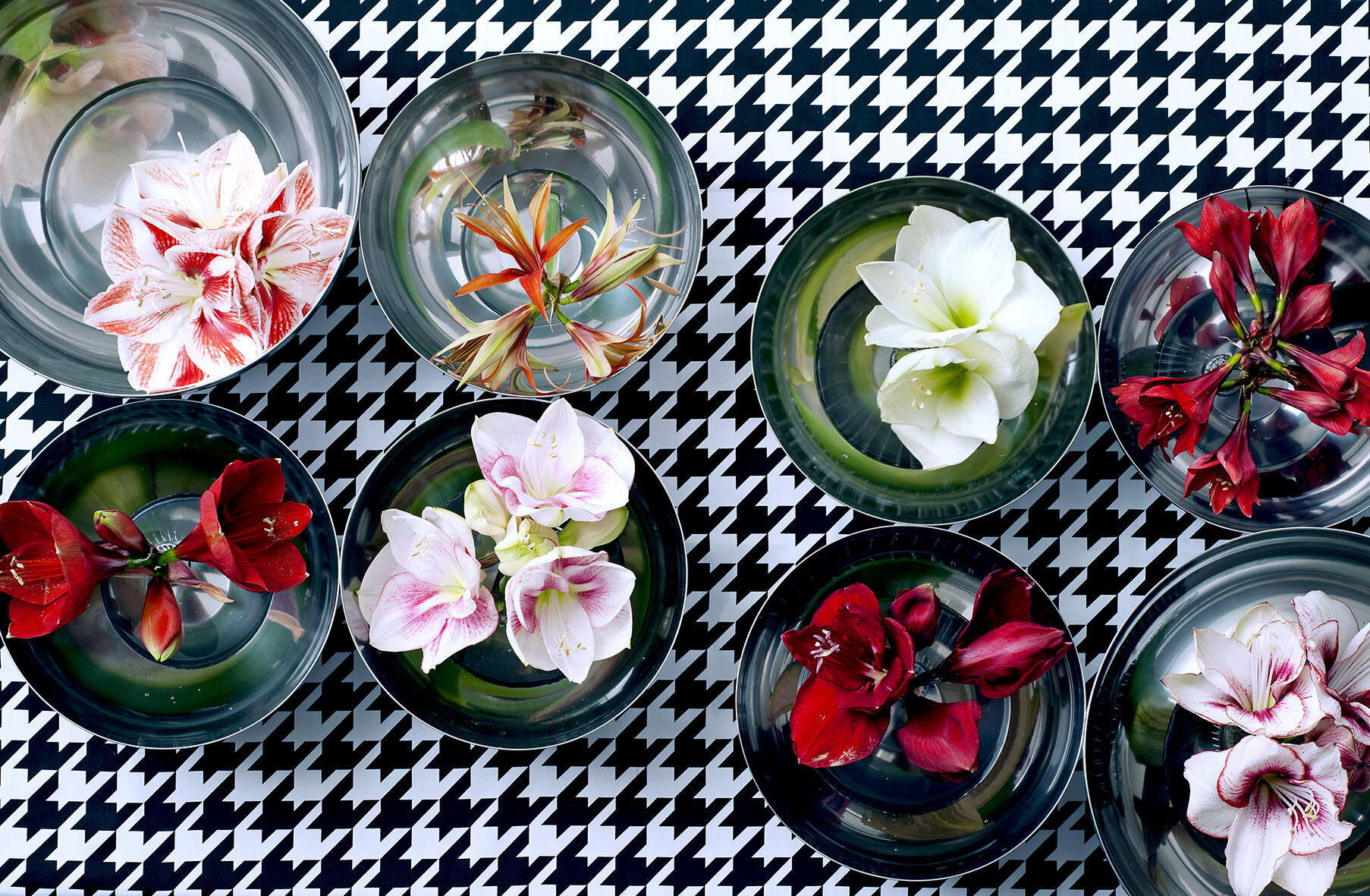My Top 10 Christmas Flowers Pt.1
I have split my list of favourite flowers for Christmas into two parts and to be honest I could have easily made a Top20!
There are so many gorgeous flowers around but I have narrowed it down to those that I know people can relate to. You may even have your own favourites that aren’t listed here and it would to hear what they are!
So here goes…the first 5 for you!
1. Amaryllis
2. Cymbidium Orchid
3. Carnation
4. Hyacinth
5. Euphorbia Fulgens
Amaryllis
Amaryllis “Exception”
The statuesque and dynamic Amaryllis is a firm favourite of mine right through the festive period and beyond. As a cut flower it is available in a wealth of gorgeous colours from deep rich burgundy, bright Christmas red, apricot, white and two-tone striped varieties amongt many others. The blooms are usually sold as single stems and you really don’t need many to make a spectacular display at home. Just three stems with some textural foliage is enough to provide a stylish vase display for a sideboard or table. Amaryllis are picked tight in bud but will only take 2-3 days to flourish in a warm domestic environment. The wide stems are hollow and sometimes quite brittle so they are not that good for using in floral foam. Place the stems in tepid water and soon the water will be drawn up the stems so the vase may need topping up after a day or so. The stem does have a tendency to split which can provide a rather unusual decorative effect; alternatively a little bit of tape or a rubber band around the bottom of the stem will prevent this. Once the flowers have opened – there can be up to 5 flowers per stem – pick off any fading bloom to encourage the others to open. Usually though you should get a stunning show of colour from each stem as each bloom open simultaneously.
Cymbidium Orchid
Cymbidium Orchid
Whilst not an obvious Christmas flower, the exotic Cymbidium Orchid is great choice of luxury bloom that will potentially give you weeks of floral pleasure. They are sold as stems of differing lengths and you can also get Mini-Cymbidium with smaller heads. Stems lengths will vary from around 40cm to 80cm and as with many flowers, the longer the stem the more plentiful and larger the bloom. With an 80cm Cymbidium Orchids you may well see in excess of 15 individual flowers. This stem length is my personal favourite and one stem nestled within a tall sleek glass vase can look super-chic! The Mini-Cymbidium is also very popular as it is slightly less expensive, and despite the smaller flower heads it can still pack a floral punch, especially with a 60cm stem length. Cymbidium are available in wealth of sumptuous colours – with green and dark pink or burgundy possibly being a popular choice for Christmas. These stems are incredibly low maintenance, just keep the water clean and you really don’t need to do much else. Pick off any fading flower heads as the mature at the bottom of the stem. Easy!
Carnation
Wait! What’s this…the carnation??
Carnation “Antiqua”
Well, yes…despite the fact that this humble flower is shunned my many it is also held in great esteem by hoardes of other flower lovers. There are literally millions of carnations being bought every single day and there’s a good reason for this. Most people will already know that they are one of the longer lasting cut flowers, easily giving you at least 10 days of floral delight, even in the warmest of homes. But for me, the real beauty is the enormous range of colours that are now commercially available. I will always seek out some of the more unusual tones in colour hues that follow the trends shown in magazines and interior design. Traditionally at Christmas, florists will be selling predominantly red carnations such is the demand, but I don’t let it stop there. There are some gorgeous other colours that will bring any festive bouquet to life. Soft mint green, cool white, antique pink, warm terracotta and mocha tones will all add a splash of reliable floral colour to Christmas flower bouquets, especially when accompanied with winter foliage and accessories. Generally, carnations are very easy to look after, but like all flowers they do need be kept away from ripening fruit. The ethylene gas given off by fruit is sure fire way to minimise the life or your carnations.
So don’t avoid this most adaptable of flowers, embrace it and maybe look for some of the really exciting colours that are on offer.
Hyacinth
Scented cut Hyacinths
There’s little to compare with the aromatic scent of hyacinth when it comes to fragrant Christmas flowers. The Hyacinth is much loved at this time of year and rightly so. Like other Spring flowers that suddenly become available at this time of year, the Hyacinth brings a feeling of hope and expectation that Spring is just around the corner and winter is in retreat. In reality of course, we are still in deep mid-winter but the heady aroma will soon lift the spirits even of the darkest, coldest of days. For Christmas my first choice would be a squat vase packed with pure white cut hyacinths. Although picked tight in bud – someone once said they look like fat asparagus! – within a day or two the delicate little florets will begin to open from the base of the stem up. Once entirely open you should see a full week of bloom but you do need to keep the water and vase very clean; a daily change of water will be required as they are quite thirsty and bacteria can build up quite quickly. The only downside, for me anyway, is the syrupy sap that is held within the stem is a fairly strong irritant – it may be wise to wear some form of glove when handling this seemingly innocent flower!
Euphorbia Fulgens
Euphorbia Fulgens
This particular flower may be a bit of a mystery to some and I’ve included the “Fulgens” part purely because there are so many different types of Euphorbia (the ubiquitous Poinsettia being one of them) Many others survive as garden plants but this beauty has the added glory of stunning arching bracts of brightly coloured flowers. Small and delicate individually, but on mass a real burst of festive lustre is on show. Euphorbia Fulgens is available in many colours and these days two differing styles. The original commercially grown stems are long and single branching, whereas latterly a multi-branch stem has been successfully introduced to market. I would personally would go for the multi-branch or spray variety when used with other flowers or the single branch when used in isolation or with some wintery twigs. Either way, the striking Euphorbia is a sure fire winner when it comes to Christmas flowers; bursting with colour, stylish form and another good lasting bloom.
You find out more about all the seasonal flowers here by giving me a call on 01202 553318 or pop into the shop.
